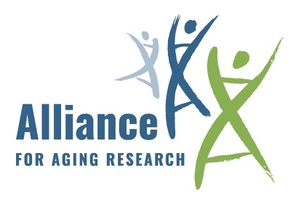WASHINGTON, May 12, 2021 /PRNewswire/ -- Today the Alliance for Aging Research released a report, "Assessing the Value of Therapies in Alzheimer's Disease: Considerations to create a practical approach to value," which the Alliance had commissioned from Milliman. The report outlines a new framework for assessing the value of Alzheimer's treatments and describes how the traditional approach to value assessment for therapeutics fails to address the challenges posed by Alzheimer's disease (AD) and suggests principles to create an alternative, equitable value assessment framework. The report examines how the approach is used by organizations, such as the Institute for Clinical and Economic Review (ICER), that use cost effectiveness assessment to judge therapeutic value from a payer's perspective. The report explores technical issues with the use of quality adjusted life years (QALYs) that render the traditional approach problematic. The QALY has significant limitations when dealing with complex diseases such as AD, as they do not recognize value driven by public health improvement, transformation, or even societal value. These issues are not unique to AD, although the characteristics of AD and the ecology of care around people with AD highlight these issues.
To evaluate the effectiveness of established value assessment approaches in terms of a disease's true impact on caregivers, communities, and social service needs, the report authors analyzed publicly available financial and public health data specific to AD. The authors explain that total costs for AD care exist disproportionately beyond medical costs, with extensive burden on families and residential long-term care. In fact, the status quo of AD care consists of systems of care that depend on low-paid workers or family caregivers, create multi-generational family burdens, and exacerbate existing racial disparities. Available public health data show Alzheimer's has immeasurable and intangible effects on both the patient and caregiver, including unintended job loss, reduction in income, behavioral and psychiatric consequences, and much more. However, when the burden of diseases such as AD are assessed, traditional methods of analyses incorporate only direct medical costs and not the costs of health effects to family caregivers or work loss for family members related to care needs for loved ones with AD. These findings are especially timely, as ICER recently opened a public comment period on its proposed value assessment for Alzheimer's disease.
The report findings and implications will be discussed during a live webinar on Tuesday, May 18, 2021 at 2:00 p.m. ET. Register for the webinar here.
Bruce Pyenson, one of the Milliman co-authors said, "A value methodology that focuses on direct medical care costs will overlook items such as family caregiver burden and the societal harms of disparities. This is an important problem when valuing AD treatments, as their worth is likely to be underestimated without consideration of spillover costs, community-level consequences, and health effects related to caregiving. Our paper also recommends separating the issue of value from the discussion about who pays and who gets paid."
Additionally, the report outlines an alternative, equitable value assessment framework for use in AD that accounts for the ecosystem that surrounds people with AD, including the impact treatments may have on ameliorating social ills such as racial disparities. The principles include that such a framework should, a) utilize metrics that, when appropriate, apply the same standards regardless of age or socioeconomics, b) capture the health-related value of AD treatments not only for patients but also for their family caregivers, and c) appropriately account for changes in non-health outcomes and issues of community value related to AD patients and their caregivers.
"This report is further evidence that ICER's QALY-based assessments do not take into account the full and true burden that complex conditions such as Alzheimer's disease have on patients, family caregivers, and society, which means they also don't recognize the value of treatments that alleviate those burdens," said Sue Peschin, MHS, President and CEO of the Alliance for Aging Research. "We need to develop non-QALY alternatives that put the economic focus strictly on the effectiveness of treatments and services, and whether they are truly delivering health outcomes that patients want."
To read the full report, click here.
The report reflects the view of the authors, who are employees of Milliman, which does not endorse any product or program. Funding for the report was provided by the Alliance, which received supplementary grants from Biogen and Eli Lilly.
About the Alliance for Aging Research
The Alliance for Aging Research is the leading nonprofit organization dedicated to accelerating the pace of scientific discoveries and their application to vastly improve the universal human experience of aging and health. The Alliance believes advances in research help people live longer, happier, more productive lives and reduce healthcare costs over the long term. For more than 30 years, the Alliance has guided efforts to substantially increase funding and focus for aging at the National Institutes of Health and Food and Drug Administration; built influential coalitions to guide groundbreaking regulatory improvements for age-related diseases; and created award-winning, high-impact educational materials to improve the health and well-being of older adults and their family caregivers. For more information, visit www.agingresearch.org.
Media Contact: Lauren Smith, [email protected], 202-688-1229
SOURCE Alliance for Aging Research

Related Links
WANT YOUR COMPANY'S NEWS FEATURED ON PRNEWSWIRE.COM?
Newsrooms &
Influencers
Digital Media
Outlets
Journalists
Opted In





Share this article